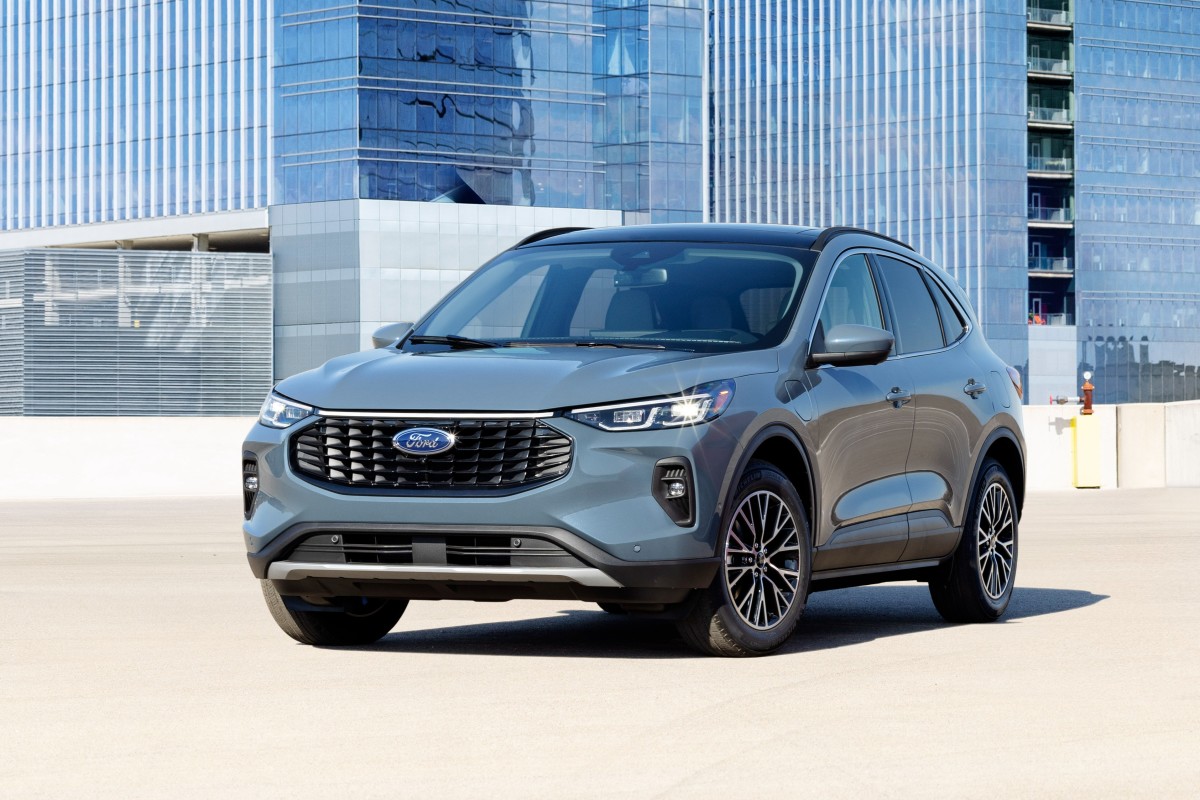If you’re seeking a little self-employment behind the wheel by becoming a rideshare driver, it’s important to figure out which category of this profession you’d like to pursue, first. Then, figure out what your vehicle will be—you want to ensure it complies to the company you’d like to drive for. Luckily, the requirements aren’t ultra-strict for most of them. However, if you’re driving for UberEats, DoorDash, or another delivery service, your vehicle needs will be different from somebody who’s chauffeuring riders via Uber Black all day long.
It should be said that driving for a rideshare service may impact your warranty and your insurance, so it’s a good idea to look into these before diving in. There may be special incentives available, too.
Here are our new car picks for the best cars for rideshare driving across several categories. We’ve framed them through Uber categories, as Uber tends to have the strictest rules. But before you buy, be sure to check the eligibility lists on Uber, Lyft, and other companies’ websites. We’ve already done that, but they do periodically change or update vehicle eligibility.
The Best Cars for Uber and Other Driving Services in 2025
UberX & Lyft
Uber XL
Uber Black
Uber Eats / Door Dash / Post Mates
UberX & Lyft
Redesigned back in the 2023 model year, the eleventh-generation Honda Accord has all the familiar traits of its predecessors and somehow even more room inside, draped in a sleek shape that looks a little like the big-bucks Audi A7. Standard Uber drivers may get confused for Uber Black drivers. The previous Accord was a champion of room, and the new one still has the most rear-seat legroom of any midsize sedan sold in the U.S. (40.4 inches) and a huge 16.7 cubic foot trunk.
The interior finishes are nice, and the car feels more expensive than it is. The front seats are wide, deep, and well-padded, and the back is similarly comfy. The doors and trunk open wide, making it easy to get in and out of and to load and unload quickly. In other words perfect for passengers. Other traits also make the Accord a good rideshare vehicle. For example, Honda bundles in lots of driver assist gear, including adaptive cruise control, which can help keep drivers safe on those long 12-hour days of airport runs.
Best of all, the hybrid model pairs a 2.0-liter four-cylinder engine with electric motors for higher power output than the gas-only version and up to 48 mpg in combined driving. Buy one of the high-trim hybrids, like the Sport or Touring, and that number falls to 44, but that’s still fantastic fuel mileage for a car this size. The Accord can’t be optioned with all-wheel drive (AWD), but it does come with a long reputation for quality and durability.
Perennial rival to the Accord, the Toyota Camry offers a similarly spacious interior (though not quite as much rear legroom), a smooth ride, and good performance across all of the available configurations. As all models are now hybrid, it’s truly the model that rideshare drivers will want, pairing a 2.5-liter four-cylinder engine with an electric motor for 225 total system horsepower when equipped with front-wheel drive (FWD). All-wheel drive (AWD) models put out as much as 232 ponies thanks to the addition of the rear axle’s motor. Fuel consumption is impressive, too: The base FWD LE returns up to 52 mpg combined, and the AWD version follows a tad behind at an EPA estimated 50 mpg combined.
Like the Accord, the Camry comes with lots of standard safety gear and both cars get good marks from safety ratings agencies. The interior is a bit dull, and the materials feel rather basic in the low-trim LE, but it’s an uncomplicated and roomy car with rock solid build quality. If you want to spring for upgraded finishes, Toyota offers both synthetic and genuine leather options. Back seat space is generous, with around 38 inches of legroom and 38 inches of headroom.
Passengers won’t compete for space with people up front, and the rear door openings are large, making it easy to enter and exit the car. The Camry’s trunk measures 15.1 cubic feet, so it’s large enough for two passengers’ bags. If neither the Accord nor Camry strikes your fancy, the Hyundai Sonata hybrid offers cooler styling, a trunk closer to the Accord in size, and a lengthy warranty at a similar price. Its back seat is appreciably smaller, however, than the Camry’s.
The Toyota Prius has been the bedrock vehicle of the rideshare world ever since the launch of Uber and Lyft, and it was gradually displacing the Ford Crown Victoria as America’s favorite taxicab in the decade before these apps became common. Historically, it’s offered a huge cabin and very low operating costs, but a ground-up redesign for the 2023 model year turned it into a much nicer vehicle with far more capability. It’s nicer to look at, more comfortable to be in, and much more enjoyable to drive without compromising any of the things it’s known for. It’s still wildly efficient—returning up to 57 mpg combined—but lots of other things are better.
First, Toyota gave the redesigned Prius much more power. Where the previous generation had just 121 horsepower, the new one has 194 (or 196 if you opt for AWD), so acceleration is no longer like watching paint dry. Second, there are more comfortable seats up front, a major boon to rideshare drivers and regular civilians. Then there’s the sleek styling, which makes it distinctly the prettiest Prius ever. There are some compromises for the looks, namely slightly less head room and cargo space, but rear-seat legroom grew by 1.6 inches, and the 20.3 cubic foot cargo area behind the rear seats still puts most sedans to shame.
Toyota also includes, as before, a bevy of safety systems that are helpful in dense urban driving or long highway runs. This is a Prius transformed, but it’s likely to remain a staple of the rideshare world. There’s also a plug-in hybrid (PHEV) Prius Prime, but it costs more and if you’re running all day, the economics of the regular Prius make more sense.
Uber XL
UberXL, a product mirrored by Lyft’s “XL” ride, is for large vehicles that can seat at least seven passengers. There are only a few hybrid vehicles in this segment, but it’s worth checking back on both company’s websites periodically for new additions. The Toyota Grand Highlander and Lexus TX, both new vehicles for 2024, are likely the most efficient “XLs” on the market but aren’t yet approved for UberXL rides.
The Chevrolet Tahoe only makes sense for rideshare drivers if they spec it with the optional turbodiesel inline-six engine. While this jumbo-sized SUV comes with a standard V8, it’s much thirstier than smaller three-row crossovers like the Chevrolet Traverse or Volkswagen Atlas. With the optional diesel, however, the Yukon can return up to 23 mpg, which is an excellent number for something this huge. There’s also the even larger Suburban, which gets about the same mileage with the diesel.
Both are also considerably more expensive than three-row family crossovers, but there are some advantages to rideshare drivers for choosing this model. Since there are very few truly efficient options in the “XL” set of vehicles, the Yukon’s turbodiesel makes it a good performer and it has the kind of interior room and third row that only the very largest crossover-style SUVs (like the Traverse) can match, so if you actually have passengers who want to use the third row, they won’t complain that it’s too small as in vehicles like the Toyota Highlander.
The Yukon, and the related Chevrolet Tahoe and Suburban, are also eligible for Uber Black. Picking up those rides requires carrying commercial driver’s insurance and having a very high star rating. This is a big machine, and the Yukon XL is even bigger, but it is very versatile and can legitimately seat seven adults.
The only PHEV minivan on the market, the Chrysler Pacifica Hybrid is hugely spacious and very fuel-efficient. It also has a fully electric range of 33 miles, though it can’t fast charge, so this is only meaningful for part of the day if you’re doing rideshare as your main job. Since the hybrid is only available on the top trims, it doesn’t come cheap, but that also means a very luxurious-feeling interior that could earn better tips.
The Pacifica is also nicer to drive than most other minivans and gets better gas mileage than almost any seven-passenger SUV, so the extra upfront cost might be worth it. At its heart is a 3.6-liter V6 mated to a pair of electric motors for a combined 260 hp. A continuously variable transmission (CVT) routes power to the front wheels, and unlike the regular Pacifica AWD is not available. The Pacifica Hybrid has a 16-kWh battery pack, but it cannot fast charge and on a Level 2 (240-volt) charger, it takes two hours to juice.
There is, however, more than room for seven and more potential cargo space than all but the largest SUVs. There are 32.3 cubic feet behind the third row, 87.5 with the third row stowed and 140.5 with both rows folded, though most rideshare drivers will never use all the volume like this. The only caveat to the Pacifica Hybrid relative to the regular version, beyond price, is that it doesn’t get the standard Pacifica’s “stow-n-go” seats, but rideshare drivers won’t use that either. Both the Honda Odyssey and Kia Carnival might be better if you need a non-hybrid minivan for ridesharing.
Among minivans, there’s nothing more efficient than the Toyota Sienna. It comes only as a hybrid and returns up to 36 mpg in combined driving according to the EPA. It’s also the only minivan to offer AWD, and fitting that feature only reduces fuel economy by 1 mpg combined. For family minivan buyers, the Sienna’s so-so performance and hard-to-removed middle seat make it one of the less capable models, but for rideshare drivers, it’s essentially a perfect money-making machine for “XL” work.
Toyota upgraded the Sienna’s cabin a couple of yers ago, and it feels more premium and expensive than it used to. There’s ample room in every row and it can seat up to eight people, though the seven-seat configuration with captain’s chairs is more comfortable (and popular). Legroom is generous for all passengers, and the third row is spacious enough for adults, though they’ll likely prefer shorter trips. With the third-row seat upright, the Sienna still offers 33.5 cubic feet of space, so there’s enough room for luggage, too.
Among the current UberXL-approved vehicles list, the Sienna is the most efficient option. If Toyota’s new Grand Highlander hybrid joins the list, it’ll be close behind.
Uber Black
Uber Black drivers require commercial insurance and, in some municipalities, special permits, so drivers who commit to these services are almost always full-time. The rates are correspondingly high for these fares, but making money still means choosing the right vehicle, and the list is more restrictive than any other category, comprised primarily of luxury vehicles.
The Cadillac Escalade is a defining vehicle in its class, and it’s one of the most iconic luxury cars of all time. Though its price tag is out of reach for many people, there is no denying the Escalade’s utility, space, and capability. Like the GMC Yukon and Yukon XL, the Escalade comes in two sizes: the merely huge regular version and the ocean-liner-sized ESV. The Yukon XL and Chevrolet Suburban enjoy slightly more overall cargo room, but otherwise, the Escalade’s vast interior is unmatched among other SUVs.
The Escalade comes standard with a 6.2-liter V8 that makes 420 hp and 460 pound-feet of torque, offering as much as 17 mpg combined. The available adaptive air suspension keeps the big SUV pinned to the road and soaks up most of the worst imperfections in the road.
Inside, the Escalade offers an expansive space with premium materials throughout. Seven people can ride in absolute luxury, and Cadillac offers a bench seat for the second row that increases seating capacity to eight. Passengers have plenty to love about every seat in the house, and the third row is spacious enough for adults to ride comfortably. If you’re looking to coddle your passengers, the second-row seats can be upgraded with heating, and an upgraded genuine leather upholstery option is available.
This SUV was brand-new for the 2024 model year, and it’s the first properly sized three-row SUV from the Japanese luxury brand. The Lexus TX is based on the new Toyota Grand Highlander, and both are fuel mileage champs. Unlike the Toyota, however, the TX is only available with the parent company’s new “hybrid max” engine (TX 500h), a non-hybrid four-cylinder (TX 350), or a very expensive plug-in hybrid setup (TX 550h+). It’s the TX 500h that rideshare drivers will be interested in.
It returns an EPA-estimated 27 mpg combined, which isn’t as good as some of Lexus’ other hybrids but is very good among the limited set of Uber Black vehicle choices. It’s more expensive than the Genesis GV80, whose four-cylinder version is another good choice for Uber Black work, but it returnes 5 or 6 more mpg in every measure and it comes with the familiarity of Lexus/Toyota software, systems, and quality. There are three rows of seats and even the third row isn’t too small to fit adults for short periods of time, and that allows considerable flexibility for rides that might have up to four or five passengers.
The downside to the TX is that for a vehicle this price (the 2024 Lexus TX 550h starts just shy of $70,000), it doesn’t look or feel all that luxurious. It also has some cosmetic resemblance to the Grand Highlander, and part of the reason for paying extra for Uber Black is that you get a nicer vehicle. Will most fares notice? Probably not.
Mercedes-Benz GLC
The Mercedes-Benz GLC is the smallest of the Uber Black choices we’ve listed here. It’s only a two-row SUV, so choosing it means you probably won’t be able to accept rides with more than two or three passengers (it doesn’t qualify for “Black SUV”) and it’ll have a limited amount of luggage space (though far more than most sedans). However, it’s a supremely luxurious vehicle for its price and returns excellent fuel mileage by the standards of this group, up to 29 mpg combined in standard GLC 300 form.
The nice part is that the upfront cost of the GLC, recently redesigned for the 2023 model year, is considerably lower than the other choices listed here. At around $48,000 to start, it’s $20,000 cheaper than the TX and $35,000 less than the Escalade. Since value and MPG are the main points of this choice, it’s best to stick with the lower trims and the standard rear-wheel drive layout, though AWD is available. There’s plenty of room in both rows and the interior is as quiet as it is beautiful. It feels much richer than that of the TX, while also getting much better gas mileage than its closest rival, the Genesis GV70.
Demerits include a fussy infotainment system comprised almost entirely of touch-sensitive controls and a dearth of standard safety gear. You get used to the infotainment in time, but it an be frustrating to stab at the screen while keeping your eyes on the road. All that fancy driver-assist gear that’s standard on the Prius? Much of it requires a pricey option package at Mercedes. But it’s a bonafide luxury ride, which customers will like, that doesn’t break the bank at the time of purchase or at the pump.
Uber Eats / Door Dash / Post Mates
Food does not complain that your back seat is too small or that your vehicle isn’t fancy or clean enough, and the people ordering the food couldn’t care less what you’re driving. For food orders or other delivery services, it’s all about urban, city-driving fuel economy, so the best vehicles for this are the most efficient.
Best for: More room in back and in the cargo area
Redesigned for the 2023 model year, the Kia Niro is the most fuel efficient crossover you can buy. It comes as a very green hybrid, a PHEV, or as a fully-electric model, but it’s the standard hybrid we’re discussing here. It can return up to 53 mpg in base-model form, or 49 mpg in its more well-equipped variations. It’s a much nicer vehicle to drive and look at, as well, than the previous first-generation Niro. There are still only 139 hp driving the front wheels through a CVT, but it feels a little peppier than before and, frankly, it’s gorgeous by small hatchback standards.
Blurring the line between hatchback and SUV has other advantages. There’s lots of room in both rows of seats (including 39.8 inches of rear legroom) and a huge amount of cargo space, 22.1 cubic feet behind the rear seats and 63 with them folded. On EX and higher models there’s also a lot of desirable standard equipment. All told, it’s an excellent choice for Uber Eats, UberX, Lyft, and lots of other rideshare uses.
Best for: Maximizing profit per mile
The Toyota Corolla isn’t much fun to drive or exciting to look at, but it offers the least expensive hybrid on the market and it’s definitely built to last. That’s right, the 2024 Corolla LE Hybrid costs just $23,500 to start, though this trim is pretty basic inside. In 2023, Toyota added an AWD option to the Corolla Hybrid and boosted its 1.8-liter engine from 121 hp to 134. It’s not a big increase but both additions were welcome. This is still not a car anyone buys for performance. Zero to 60 takes almost 10 seconds and there just isn’t a ton of power, but it’s better than it used to be. The AWD version uses a rear electric motor but gains no more power.
The standard front-wheel drive Corolla Hybrid can hit 50 mpg combined according to the EPA, but the better-equipped trims run to 47. AWD versions max out at 48 mpg combined. For the price of entry, there’s no other vehicle that can hit those numbers. This makes it a champ of point-to-point delivery driving, but it’s less useful for other things.It has only marginally more rear seat room than the Mirage hatchback listed above, which is a much smaller vehicle, and only an average-ish 13.1 cubic-foot trunk. People do drive UberX and Lyft with these, and they do make money, but any rear-seat passengers over six feet tall won’t be happy to get one of these (or a similarly tight Tesla Model 3) as a ride.
The pretty Corolla Hatchback doesn’t come as a hybrid, and compact alternatives like the Honda Civic and Hyundai Elantra offer much more for rideshare drivers who need back seat and cargo room.
Used Cars
Since rideshare driving is all about economics, buying a used car is a great option because you don’t have to shell out as much money upfront—both Uber drivers and Lyft drivers would certainly appreciate this. Electric cars are a great used pick here as their brand-new MSRPs often make them uncompetitive in this arena, but lower-cost hybrid gas models are great options, too. The Hyundai Tucson, Hyundai Elantra, Honda Insight, and Honda CR-V all offer great space, practicality, and function.
On the luxury side, Tesla, Lexus, and Acura are great picks that will keep riders chasing you for a seat. If you do opt for a Tesla, we’d choose the Model Y over the Model 3 for its larger back seat and for its applicability for Uber Black rides. The 3 makes a very good delivery vehicle if you can find one used thanks to its rapid charge times, but its rear seat space has been a bone of contention with rideshare drivers and passengers for a long time.

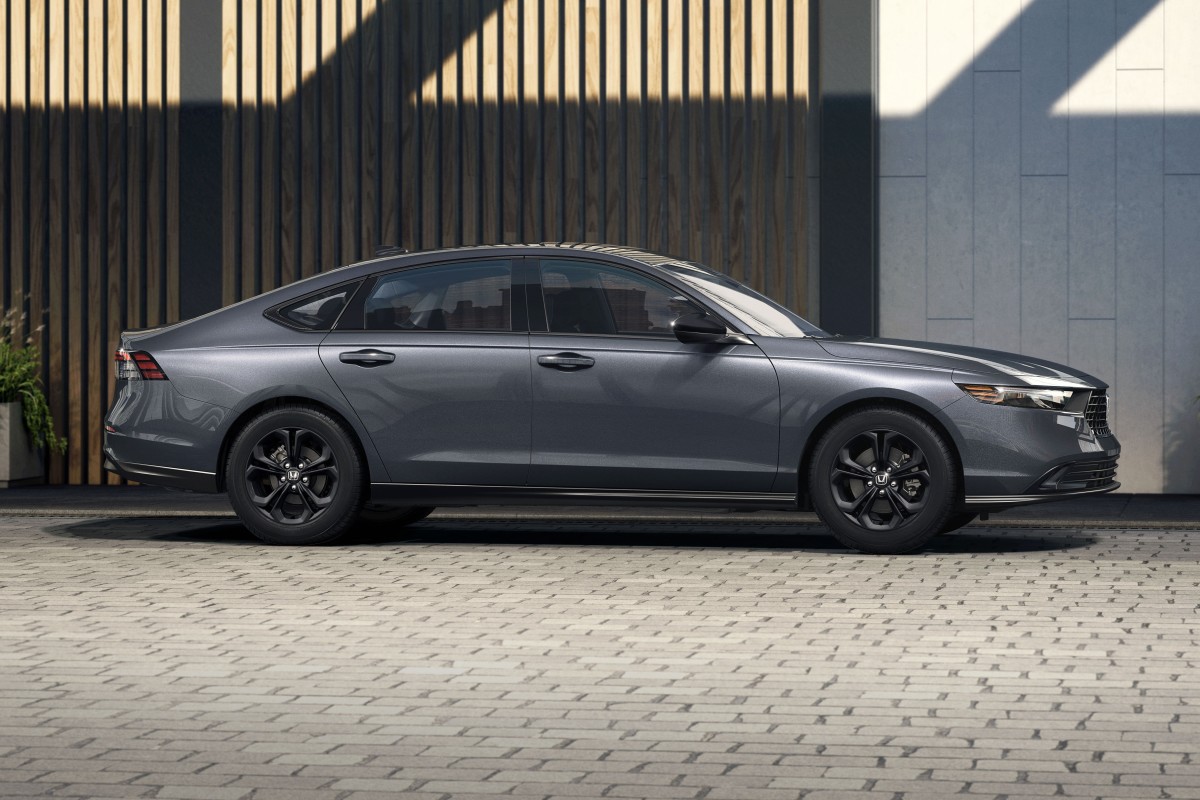 Honda Accord Hybrid
Honda Accord Hybrid Toyota Camry
Toyota Camry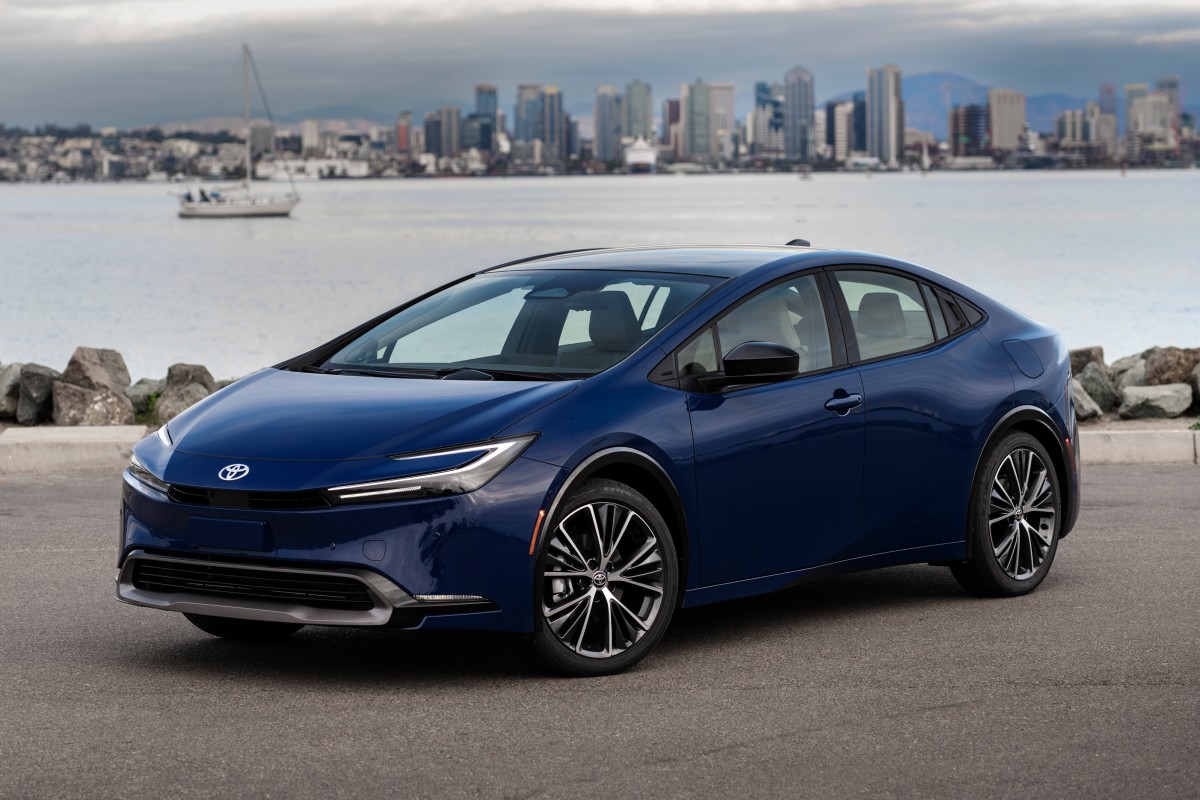 Toyota Prius
Toyota Prius Chevrolet Tahoe
Chevrolet Tahoe Chrysler Pacifica Hybrid
Chrysler Pacifica Hybrid Toyota Sienna
Toyota Sienna Cadillac Escalade
Cadillac Escalade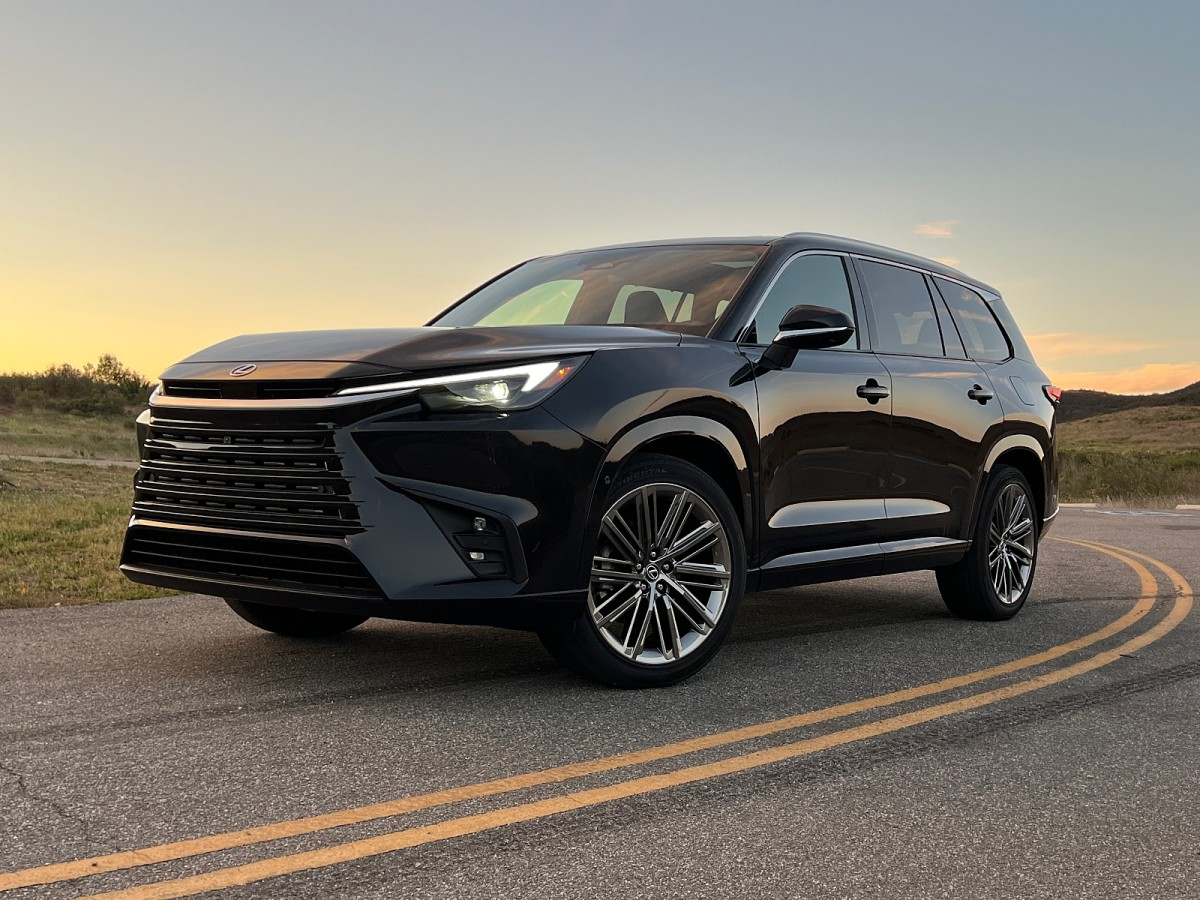 Lexus TX Hybrid
Lexus TX Hybrid
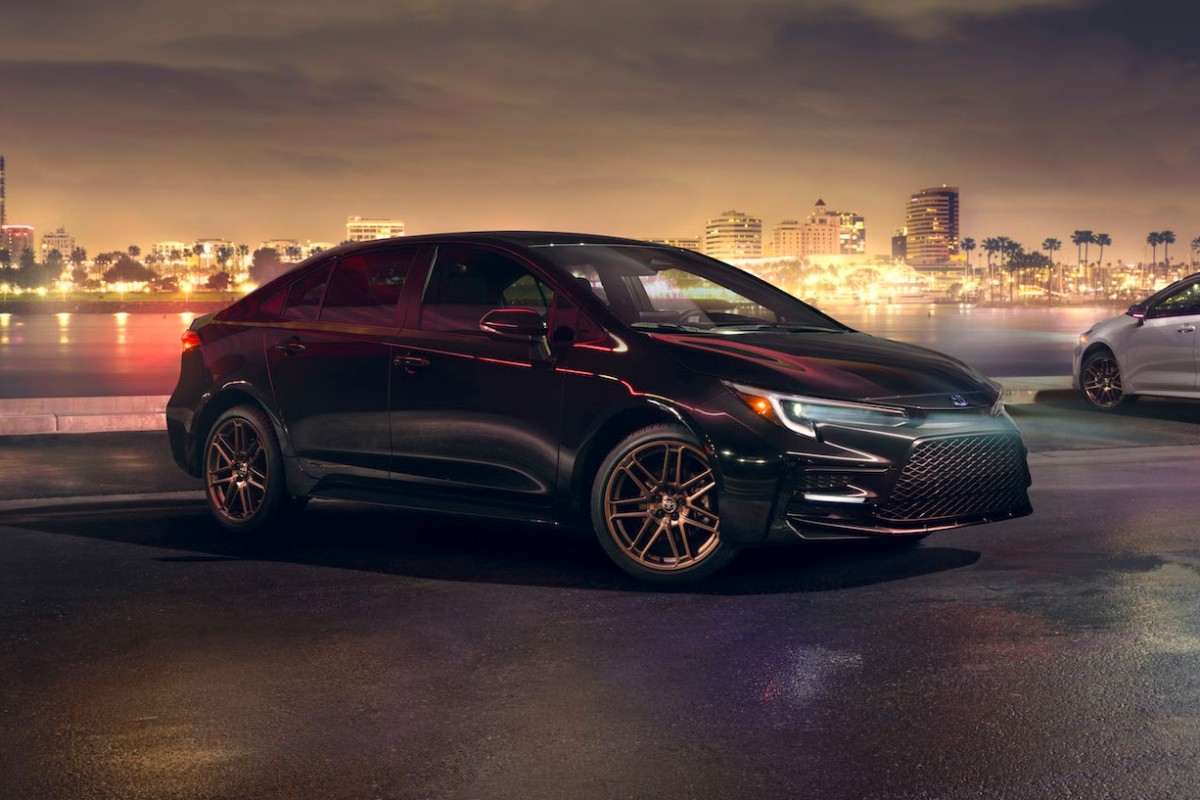 Toyota Corolla Hybrid
Toyota Corolla Hybrid
